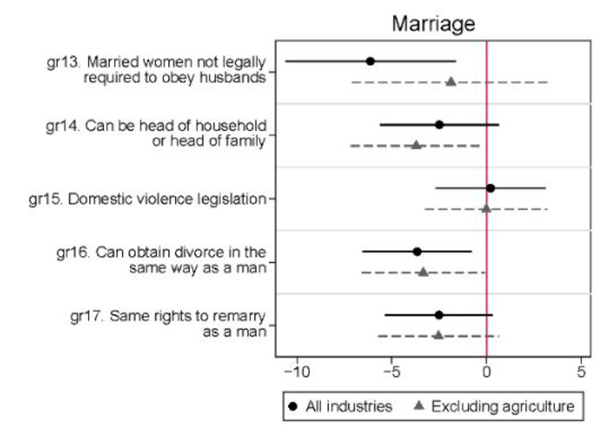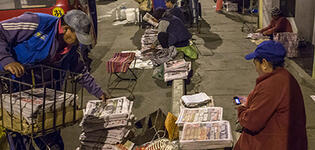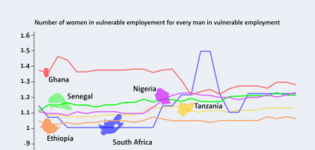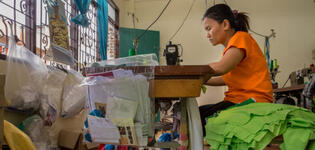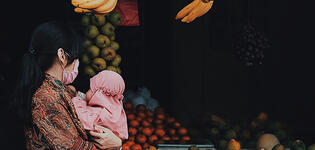Blog
Why women are made to rely on vulnerable work
The gender pay-gap is one of the foremost indicators of gender inequality and thus a guide for women’s economic empowerment policies. Although there is abundant data available on the phenomenon in OECD economies, this is not the case for the majority of developing countries, where most workers are self-employed and do not receive a regular wage, making it difficult to measure “pay gaps for similar work”.
In a recent study for the United Nations University, we took a different approach, examining the gender gap in vulnerable employment in 101 developing countries worldwide. The results have important implications for policymakers.
The gender gap in vulnerable employment shows the discrepancy between the share of women employed in jobs with poor working conditions, relative to the share of men. Our analysis finds that these gaps are large across developing countries on average, that they tend to be bigger in poorer countries or countries with discriminatory laws against women, and that the biggest driver of the gender gap reflects the outsized impact of marriage and parenthood on women.
Women are over-represented in vulnerable employment
One of the starkest inequalities in the labour market is between workers employed in decent work and those in vulnerable employment. The ILO estimates that over half of all employment in low- and middle-income countries is vulnerable, often characterised by low wages as well as lack of formal work arrangements, access to benefits and social protection programmes, as well as greater exposure to economic cycles. Workers in vulnerable employment – technically classified as own-account workers (people working for themselves) or contributing family workers (people working for their family without pay) – lack many of the labour protections and decent working conditions of wage employees or employers.
In developing countries, we find that 57% of working women are in vulnerable employment, on average, compared with 48% of men. There is substantial regional variation, with the gender gap ranging from 16-17 percentage points in South Asia and the Middle East and North Africa, to 1 percentage point in Europe and Central Asia (Figure 1). The findings show that women are more likely to work in vulnerable employment than men with similar characteristics (in terms of age, education, marital status, etc.) across many dimensions: within countries, sub-national regions, industries, occupations, and even within households. Indeed, in our most restricted comparisons – men and women with similar characteristics living in the same household – women are, on average, 7 percentage points more likely to be vulnerably employed than men.
Figure 1: Vulnerable employment by gender and world region
How countries’ structural characteristics affect the gender gap
The gender gap in vulnerable employment is wider in poorer countries, with higher fertility rates and higher young-age dependency ratios. It is also larger in countries that have more discriminatory laws against women, particularly laws regulating marriage, parenthood, access to assets, and access to entrepreneurship. For example, in countries with paid parental or full maternity leave benefits, the gender gap is, on average, 5 percentage points smaller (Figure 2).
Figure 2: Gender gap in vulnerable employment and marriage and parenthood laws
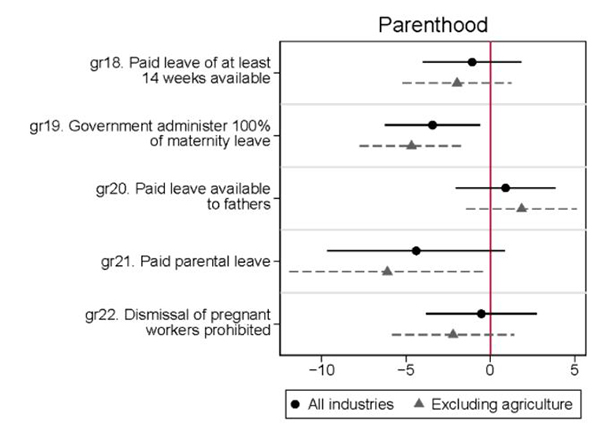
Sources: Authors’ calculations based on I2D2 and Women, Business, and the Law.
At the household-level, marriage and parenthood are key drivers of women’s vulnerable employment. A married woman with a child younger than 2 years-old has a 6-7 percentage points higher probability of being in vulnerable employment than a married father with a child of the same age.
Social norms and practices that dictate what roles women and men should play in the household also have a significant impact on women’s economic empowerment. Women’s contribution to household income comes on top of unpaid care and domestic work, which is mainly performed by women and therefore limits their engagement in the formal economy. Globally, women undertake 75% of this work, according to the OECD’s Social Institutions and Gender Index (SIGI).
The gender gap has declined since the 1990s but future progress remains uncertain
Since the 1990s, rising levels of female education and rapidly falling fertility rates have narrowed the gender gap. However, we find that it is unlikely that further improvements in women’s education and lower fertility alone can eliminate the gender gap in the coming decades. To address the remaining gender gap —mostly due to deeper, structural factors— further efforts should focus on gender inequality within families (e.g. unpaid care and domestic work), labour markets (e.g. occupation and sectoral segregation), and society at large (e.g. discriminatory social institutions).
A recent study by Mary Hallward-Driemeier and Ousman Gajigo that looks at Ethiopia’s family law reform in the early 2000s provides evidence that such policies can work. The authors show that by eliminating restrictions on wives’ work outside the home and expanding their access to marital property, the reform increased women’s share of wage and full-time employment, reducing their reliance on vulnerable work. Policies that address similar gendered constraints or that, overall, boost labour demand in female-intensive segments of the wage employment sector are promising avenues for closing the gender gap in vulnerable employment.
This article has been republished with permissions. Click here to view the original article on OECD Development Matters.
Manuel Santos Silva is a Postdoctoral researcher at the Centre for Interdisciplinary Economics, University of Münster; Maria C. Lo Bue is a former Research Associate at UNU-WIDER and Lecturer in the Department of Economics and Finance at the University of Bari; Tu Thi Ngoc Le is a PhD in Economics from Hoa Sen University; Kunal Sen is Director of UNU-WIDER and a Professor of Development Economics at the Global Development Institute, University of Manchester
The views expressed in this piece are those of the authors, and do not necessarily reflect the views of the Institute or the United Nations University, nor the programme/project donors.
 Join the network
Join the network